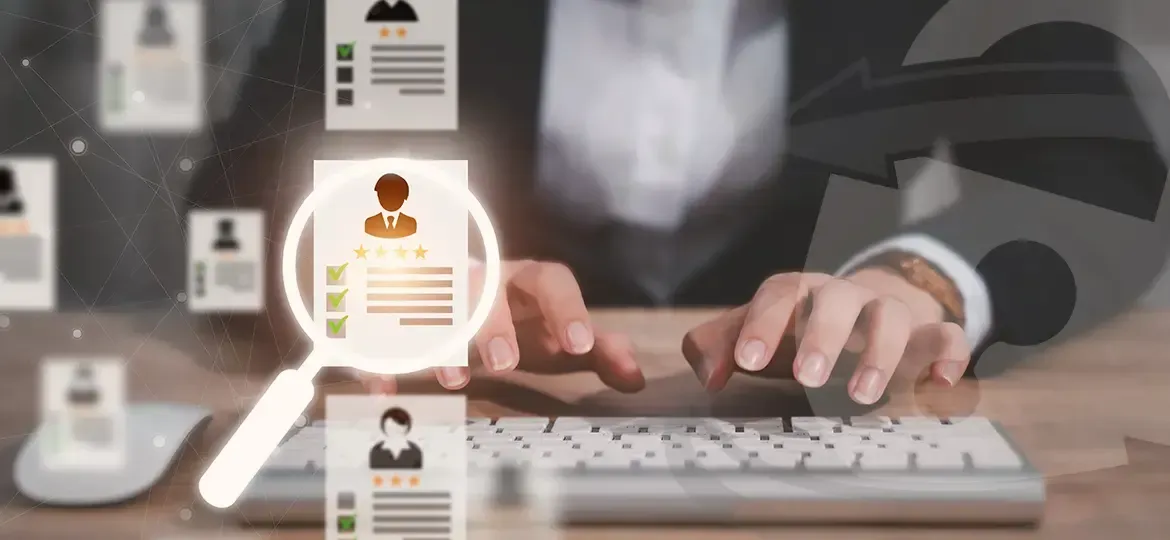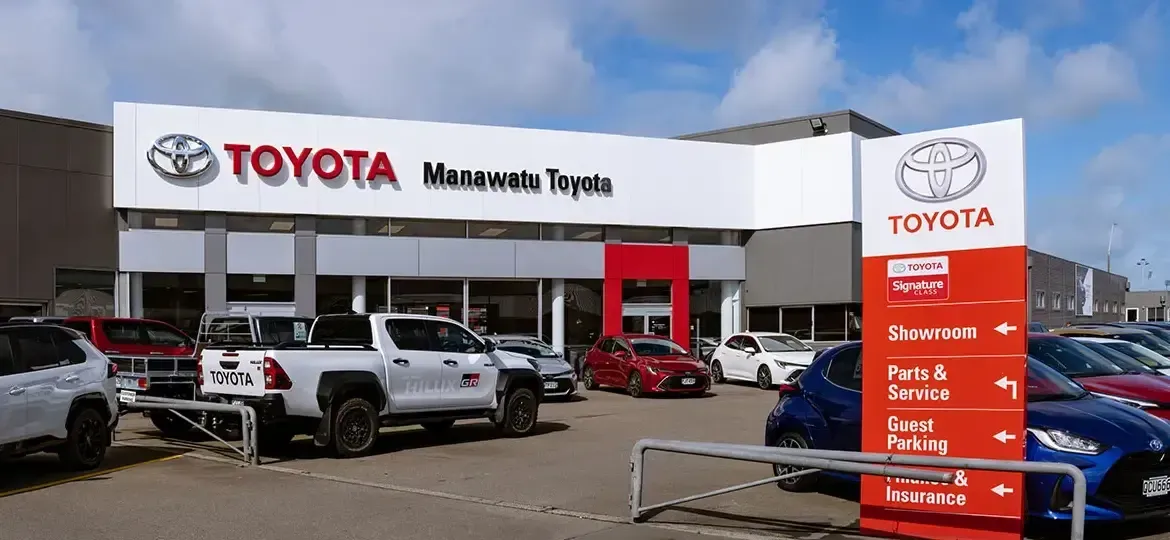News and Views

April 10, 2025
MCI & Associates is an accountancy firm with over 45 employees across offices in Dannevirke and Pahiatua. The practice services a diverse range of clients, including those in the farming and commercial sectors, and its core services include tax preparation, business advisory and planning, and general accounting. The relationship between Yorb and MCI goes back over three decades to when both companies were in their formative stages. The trust-based relationship has endured and evolved as each business has grown and matured - going through name and ownership changes.

March 26, 2025
If you think cybercriminals only go after big corporations in major cities, think again. The majority of incidents recorded by the NCSC impact individuals and small to medium businesses, proving that cyber threats don’t discriminate based on location - they target opportunity. With over 23,000 reports to the Netsafe helpline, and $17.8M in losses reported last year, small-town businesses are very much in the spotlight. In the past few months alone, three local accounting firms in regional New Zealand have suffered a data breach,and local ISP - Inspire was recently the target of a malicious cyber attack.

March 21, 2025
We've had a flying start to the year, and given we're really just past the point where you start to realise what day it actually is, we thought we'd share everything we've been working on lately. 2024 In Review As we reflect on 2024, it's clear that this year has been one of remarkable achievements and significant advancements for Yorb. We were very proud that we won the Reseller News Innovation Awards in the Regional Partner Category, a testament to our commitment to excellence and innovation. AI has continued to dominate the headlines, with some businesses making great strides in how they work and interact. However, the majority are still grappling with understanding the full impact of this technology on their business, industry, and society. As we navigate this evolving landscape, companies must adapt to the security implications, ensure the integrity of data, and adjust to changing work and consumer patterns. In line with our commitment to security, we launched our new Security Platform, Yorb Defender 2.0. Designed from the ground up to be Essential 8 compliant, we believe this solution is now a best-in-class product that meets the requirements of modern business. 2025 Looking Forward Looking ahead to 2025, we have set ambitious goals following the EOS business framework. Our recent Annual Planning has helped us develop our 10-year, 3-year, and 1-year goals, with a strong focus on several key areas: Client Experience: We are dedicated to ensuring that every interaction with Yorb meets and exceeds your expectations. Automation Platforms: We will continue to develop our automation platforms to provide more consistent and efficient service. Investing in New Technologies: Our focus will be on AI, Hyper-Automation, and Data Governance to stay ahead of the curve. Team Development: We are committed to investing in our team, ensuring they receive the best skills training in technical, people, professional, and business areas. We will are also excited to be launching business peer groups focussed around AI, bringing together business owners and leaders from across the regions to explore what the future holds for all of us. This year we are injecting new energy into our Total Support agreement, we believe there is more to our partnership than phones calls, Teams Conferences and remote support. We are therefore introducing ongoing scheduled visits as part of the contract, alongside a productivity focus with scheduled access to our development team. Kicking off this year will be monthly seminars on topics such as Security, AI, Productivity, we want to hear what topics matter most to you. Look out for your invite in the coming weeks. I’m incredibly excited by 2025 and the opportunities it brings, we call breath a collective sigh that 2024 is behind us lets get cracking on what promises to be a great year. Daniel Goymer CEO

March 12, 2025
Your IT provider should be a key partner in helping your business grow—but are they delivering real value? In this webinar, Kristal Jamieson, Marketing Manager at Yorb, sits down with Aaron Smith from Morphability to discuss how businesses can assess their IT providers, spot red flags, and ensure they’re getting the best service possible. Aaron has spent over a decade working with Managed Service Providers (MSPs) and now specialises in helping them refine their sales and growth strategies. With firsthand experience in how MSPs operate and evolve, he shares valuable insights on what to look for in an IT provider, what to avoid, and how businesses can maximise their IT investments. Join us as we dive into the key considerations for choosing and managing your IT provider effectively.

February 21, 2025
And no, it’s not because it has the potential to turn you into a Titanic. Rather, it’s because what you see and interact with most days is just the tip of what we do. Below the waterline of everyday interaction is a significant mass of knowledge, expertise, and strategic value – all aimed at helping to secure and enable the growth of your business.

By Yorb
•
January 30, 2025
In part 1 of our Data Privacy Day blog, we discussed the state of cybersecurity in New Zealand (as you do) and the critical importance of data governance. You can catch up on the whys and wherefores of data governance as it applies to you here . Moving on, this time, we’re focusing on the 13 Information Privacy Principles in our Privacy Act (2020) and what you need to do to stay on the good side of our legislation – and your customers. But first, this is why you should care.

By Yorb
•
January 23, 2025
Data Privacy Day has been internationally observed on 28 January since 2007. Its purpose is to raise awareness and promote best privacy and data protection practices. It serves as an excellent reminder of exactly how precious our data is, as well as our ethical and legal obligations as businesses to securely manage and protect it. So, in terms of data privacy, how have we fared here in New Zealand? Why is data governance so important - what is it, and why exactly do you need it? Warning – triggering content: It may not be your job to manage data – and you may not think you even need to care about it. But if you are a stakeholder, it’s your responsibility to make sure that your business complies with New Zealand’s privacy and data protection best practices. This is a big topic (sorry!), so it’s in two parts.

By Yorb Limited
•
November 21, 2024
Manawatu Toyota are an award-winning Toyota dealership with seven locations across New Zealand and a team of around 160 staff. The business has grown rapidly over the past 20 years, starting with Manawatu Toyota in Palmerston North before acquiring dealerships in Feilding, Levin, Masterton and Whanganui, as well as Tractor Repair Company (TRC).

April 10, 2025
MCI & Associates is an accountancy firm with over 45 employees across offices in Dannevirke and Pahiatua. The practice services a diverse range of clients, including those in the farming and commercial sectors, and its core services include tax preparation, business advisory and planning, and general accounting. The relationship between Yorb and MCI goes back over three decades to when both companies were in their formative stages. The trust-based relationship has endured and evolved as each business has grown and matured - going through name and ownership changes.

March 26, 2025
If you think cybercriminals only go after big corporations in major cities, think again. The majority of incidents recorded by the NCSC impact individuals and small to medium businesses, proving that cyber threats don’t discriminate based on location - they target opportunity. With over 23,000 reports to the Netsafe helpline, and $17.8M in losses reported last year, small-town businesses are very much in the spotlight. In the past few months alone, three local accounting firms in regional New Zealand have suffered a data breach,and local ISP - Inspire was recently the target of a malicious cyber attack.

March 21, 2025
We've had a flying start to the year, and given we're really just past the point where you start to realise what day it actually is, we thought we'd share everything we've been working on lately. 2024 In Review As we reflect on 2024, it's clear that this year has been one of remarkable achievements and significant advancements for Yorb. We were very proud that we won the Reseller News Innovation Awards in the Regional Partner Category, a testament to our commitment to excellence and innovation. AI has continued to dominate the headlines, with some businesses making great strides in how they work and interact. However, the majority are still grappling with understanding the full impact of this technology on their business, industry, and society. As we navigate this evolving landscape, companies must adapt to the security implications, ensure the integrity of data, and adjust to changing work and consumer patterns. In line with our commitment to security, we launched our new Security Platform, Yorb Defender 2.0. Designed from the ground up to be Essential 8 compliant, we believe this solution is now a best-in-class product that meets the requirements of modern business. 2025 Looking Forward Looking ahead to 2025, we have set ambitious goals following the EOS business framework. Our recent Annual Planning has helped us develop our 10-year, 3-year, and 1-year goals, with a strong focus on several key areas: Client Experience: We are dedicated to ensuring that every interaction with Yorb meets and exceeds your expectations. Automation Platforms: We will continue to develop our automation platforms to provide more consistent and efficient service. Investing in New Technologies: Our focus will be on AI, Hyper-Automation, and Data Governance to stay ahead of the curve. Team Development: We are committed to investing in our team, ensuring they receive the best skills training in technical, people, professional, and business areas. We will are also excited to be launching business peer groups focussed around AI, bringing together business owners and leaders from across the regions to explore what the future holds for all of us. This year we are injecting new energy into our Total Support agreement, we believe there is more to our partnership than phones calls, Teams Conferences and remote support. We are therefore introducing ongoing scheduled visits as part of the contract, alongside a productivity focus with scheduled access to our development team. Kicking off this year will be monthly seminars on topics such as Security, AI, Productivity, we want to hear what topics matter most to you. Look out for your invite in the coming weeks. I’m incredibly excited by 2025 and the opportunities it brings, we call breath a collective sigh that 2024 is behind us lets get cracking on what promises to be a great year. Daniel Goymer CEO

March 12, 2025
Your IT provider should be a key partner in helping your business grow—but are they delivering real value? In this webinar, Kristal Jamieson, Marketing Manager at Yorb, sits down with Aaron Smith from Morphability to discuss how businesses can assess their IT providers, spot red flags, and ensure they’re getting the best service possible. Aaron has spent over a decade working with Managed Service Providers (MSPs) and now specialises in helping them refine their sales and growth strategies. With firsthand experience in how MSPs operate and evolve, he shares valuable insights on what to look for in an IT provider, what to avoid, and how businesses can maximise their IT investments. Join us as we dive into the key considerations for choosing and managing your IT provider effectively.

February 21, 2025
And no, it’s not because it has the potential to turn you into a Titanic. Rather, it’s because what you see and interact with most days is just the tip of what we do. Below the waterline of everyday interaction is a significant mass of knowledge, expertise, and strategic value – all aimed at helping to secure and enable the growth of your business.

By Yorb
•
January 30, 2025
In part 1 of our Data Privacy Day blog, we discussed the state of cybersecurity in New Zealand (as you do) and the critical importance of data governance. You can catch up on the whys and wherefores of data governance as it applies to you here . Moving on, this time, we’re focusing on the 13 Information Privacy Principles in our Privacy Act (2020) and what you need to do to stay on the good side of our legislation – and your customers. But first, this is why you should care.

By Yorb
•
January 23, 2025
Data Privacy Day has been internationally observed on 28 January since 2007. Its purpose is to raise awareness and promote best privacy and data protection practices. It serves as an excellent reminder of exactly how precious our data is, as well as our ethical and legal obligations as businesses to securely manage and protect it. So, in terms of data privacy, how have we fared here in New Zealand? Why is data governance so important - what is it, and why exactly do you need it? Warning – triggering content: It may not be your job to manage data – and you may not think you even need to care about it. But if you are a stakeholder, it’s your responsibility to make sure that your business complies with New Zealand’s privacy and data protection best practices. This is a big topic (sorry!), so it’s in two parts.

By Yorb Limited
•
November 21, 2024
Manawatu Toyota are an award-winning Toyota dealership with seven locations across New Zealand and a team of around 160 staff. The business has grown rapidly over the past 20 years, starting with Manawatu Toyota in Palmerston North before acquiring dealerships in Feilding, Levin, Masterton and Whanganui, as well as Tractor Repair Company (TRC).
